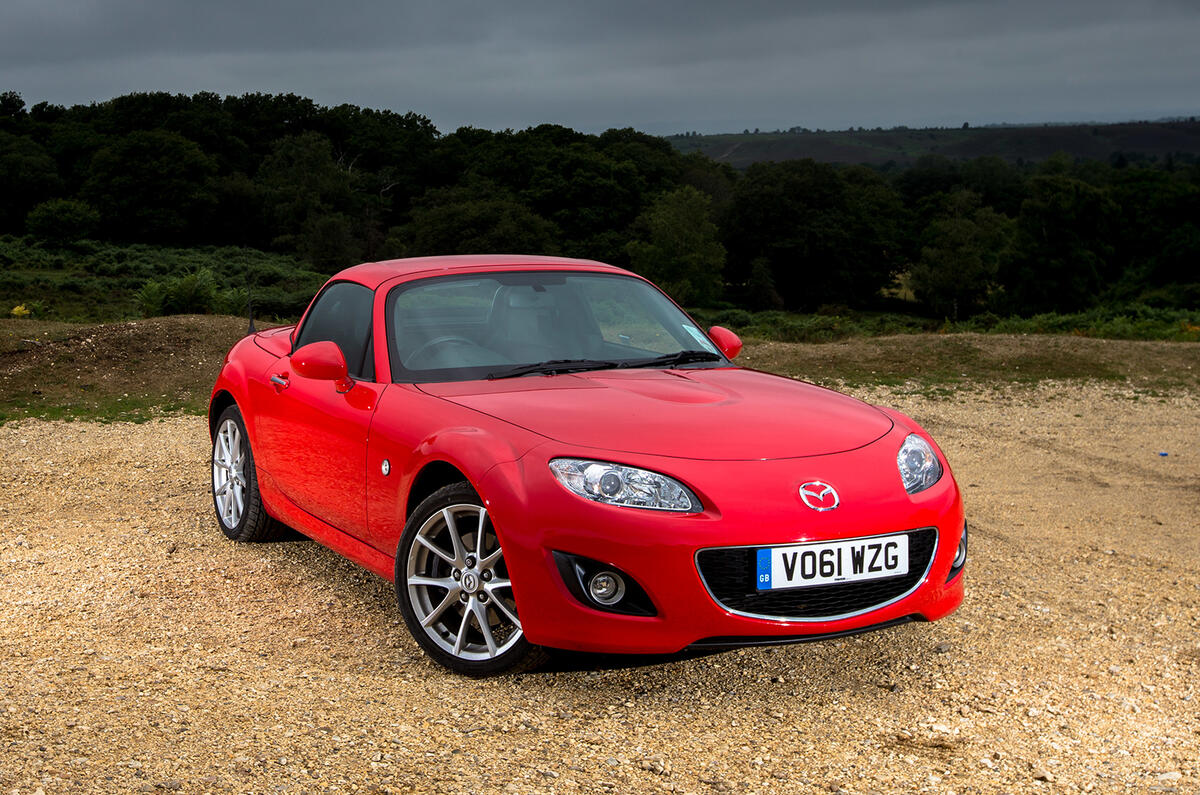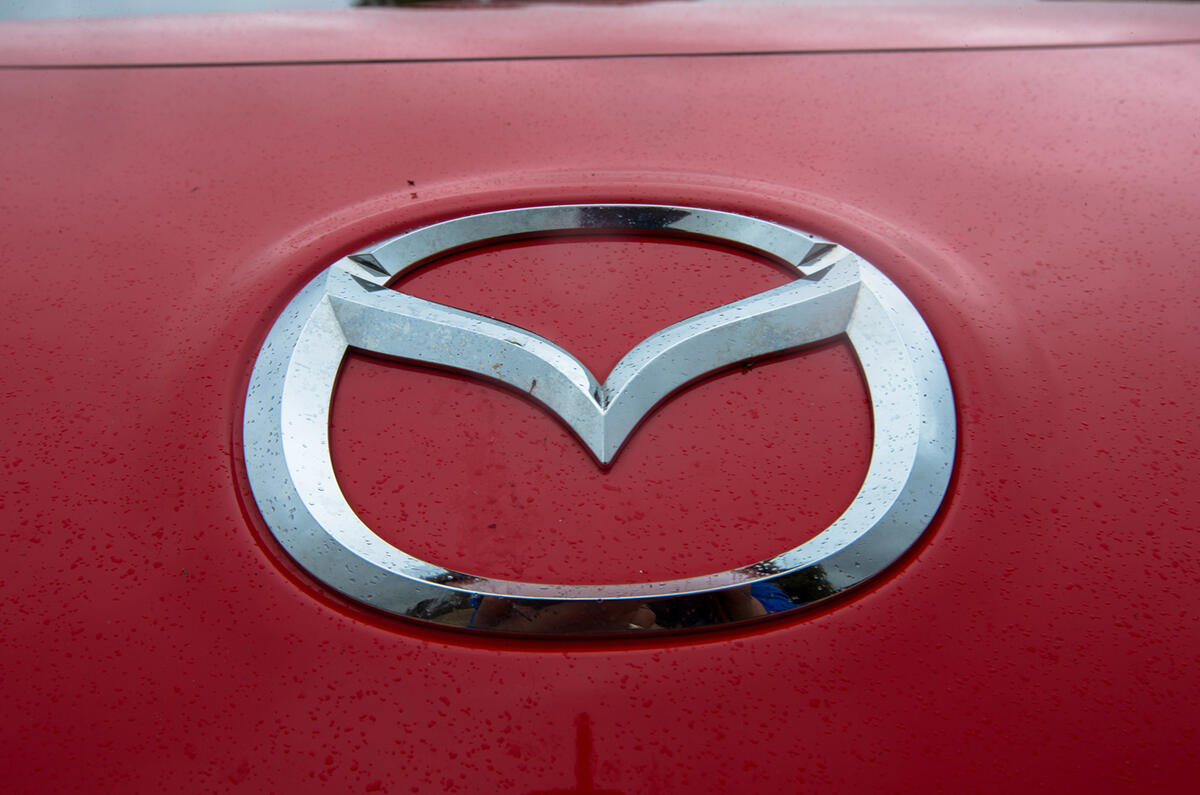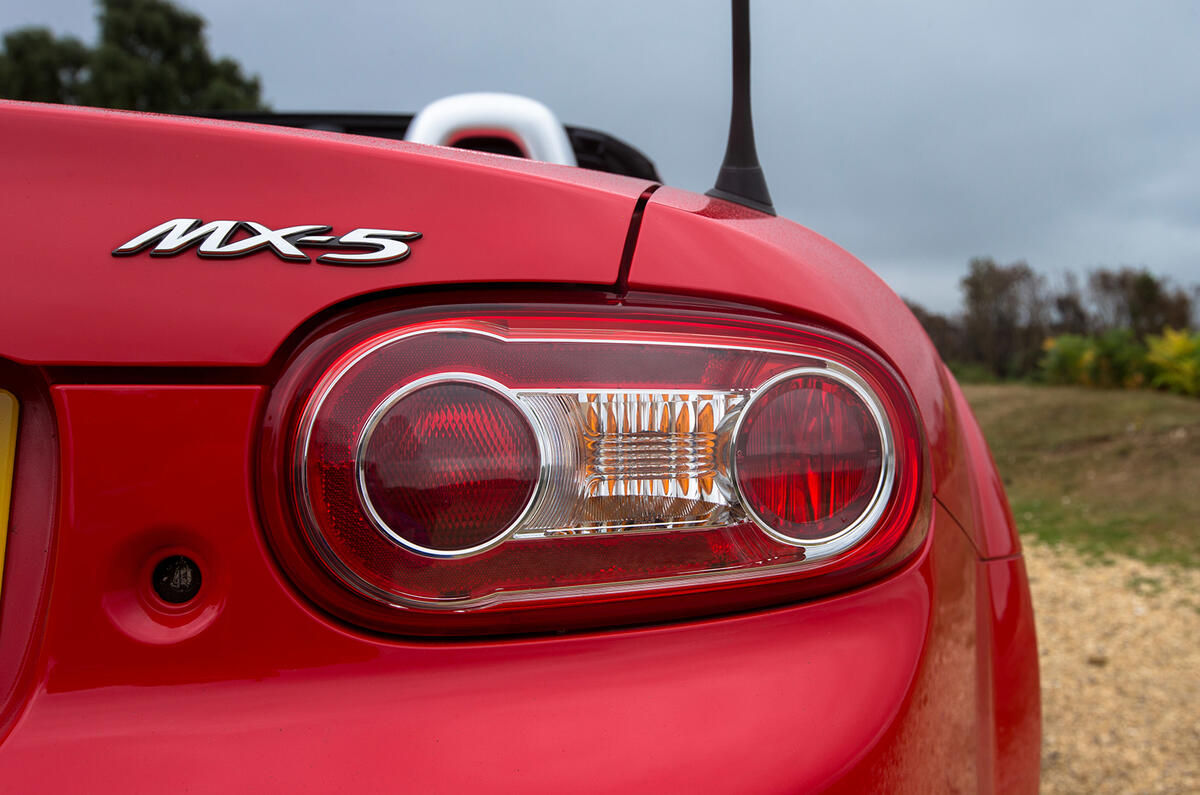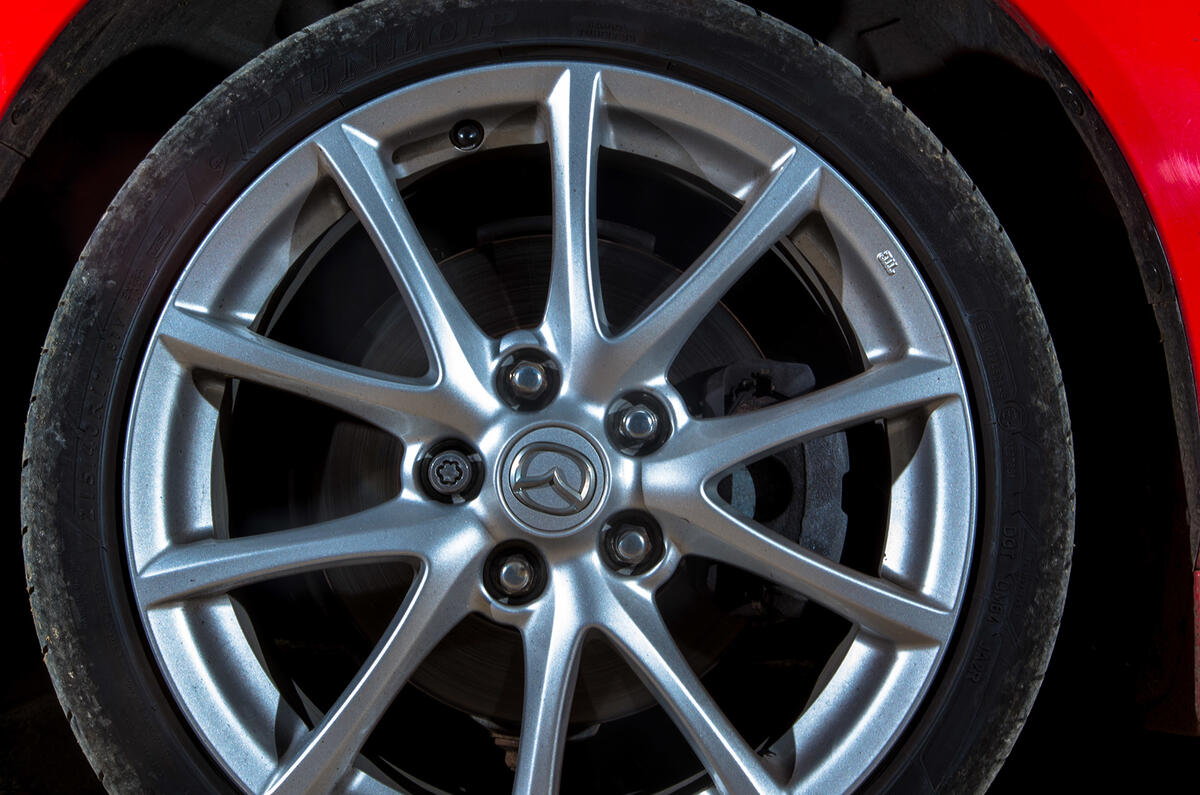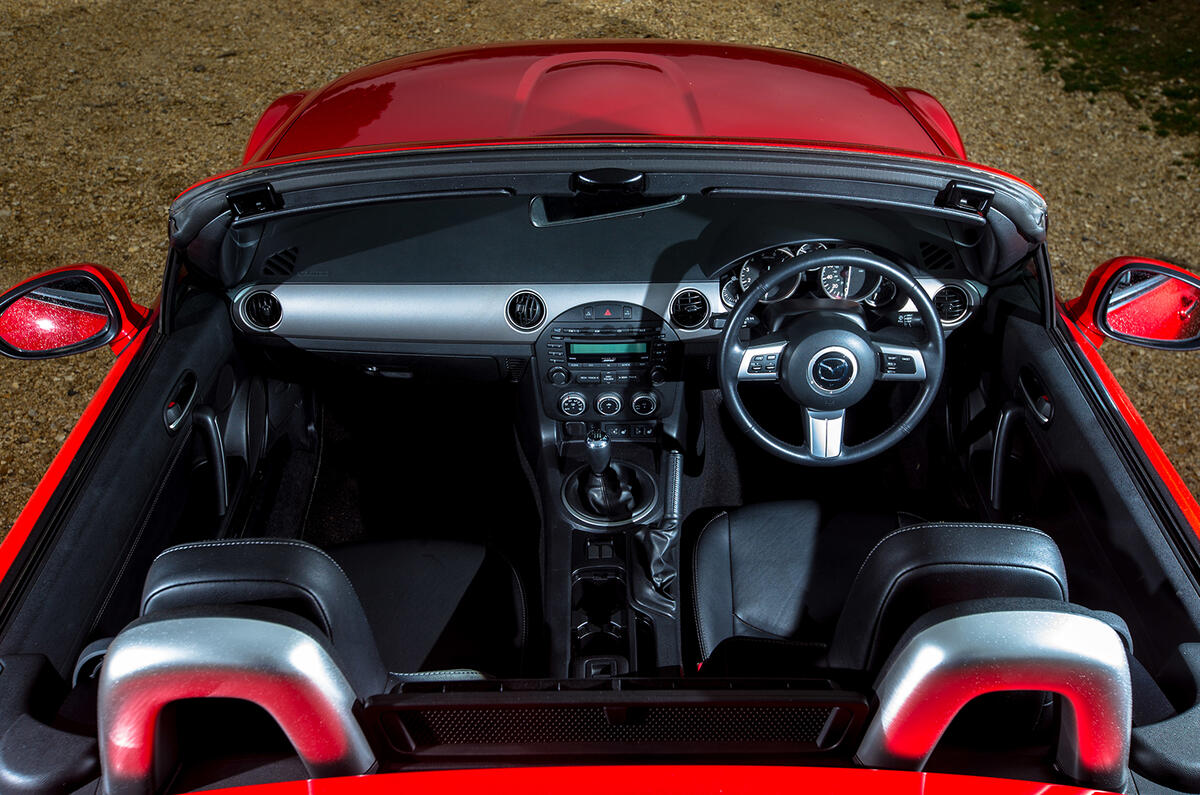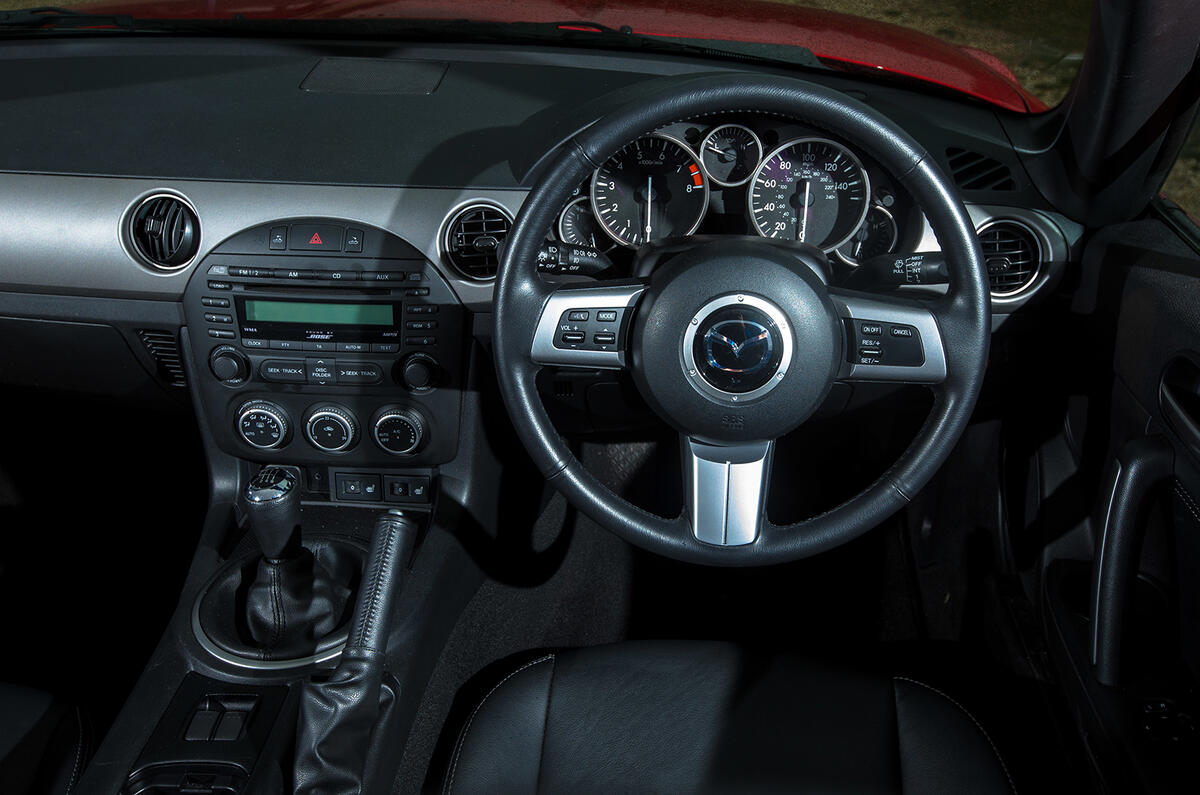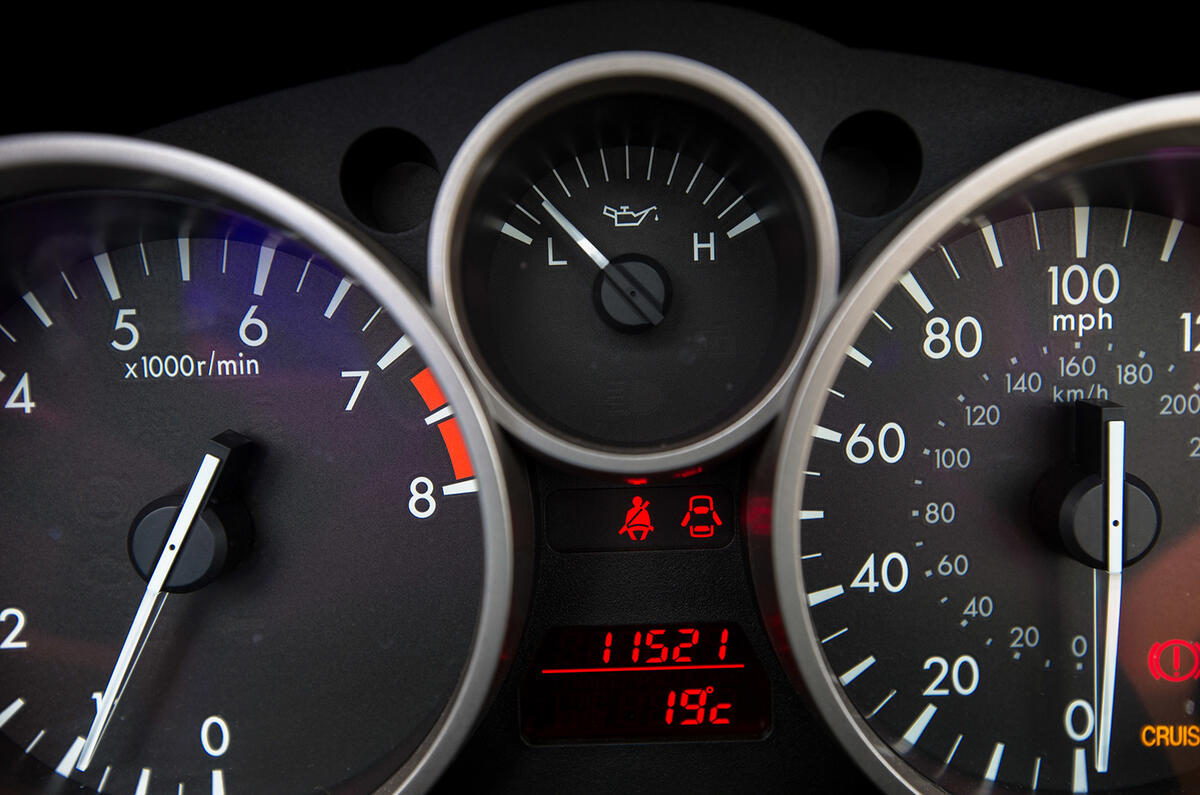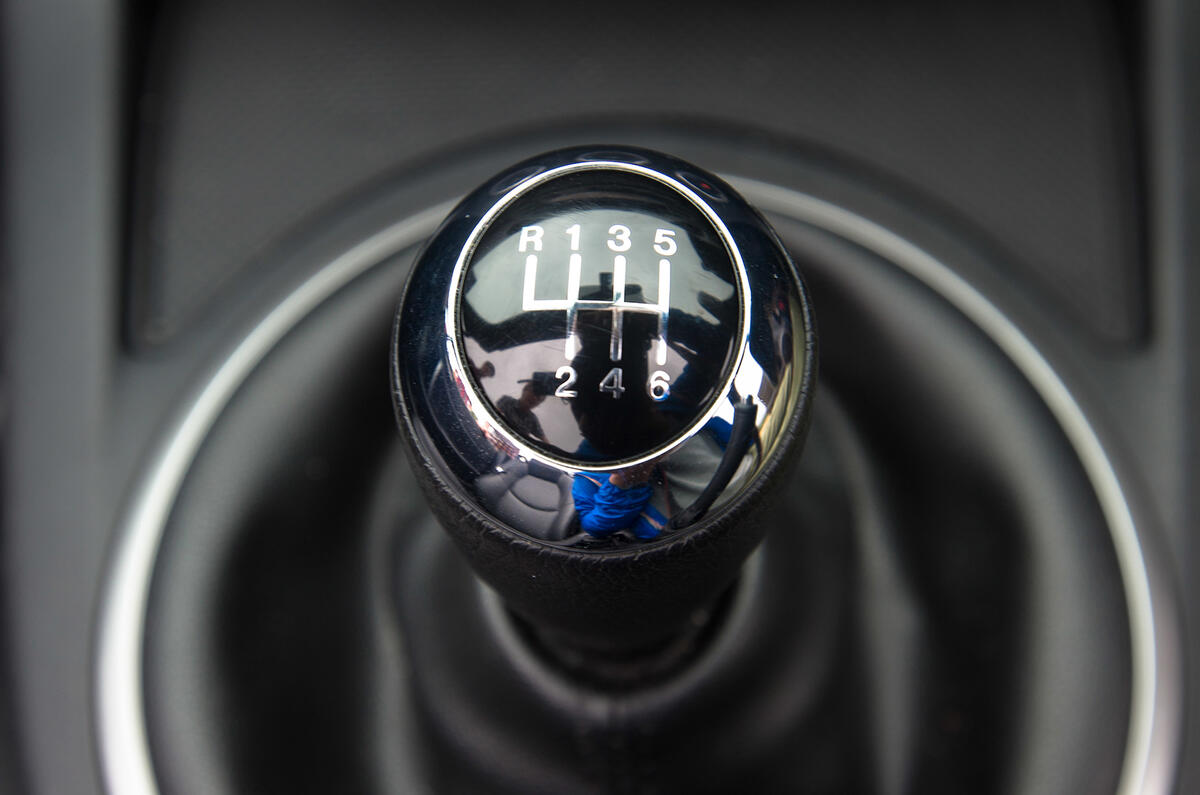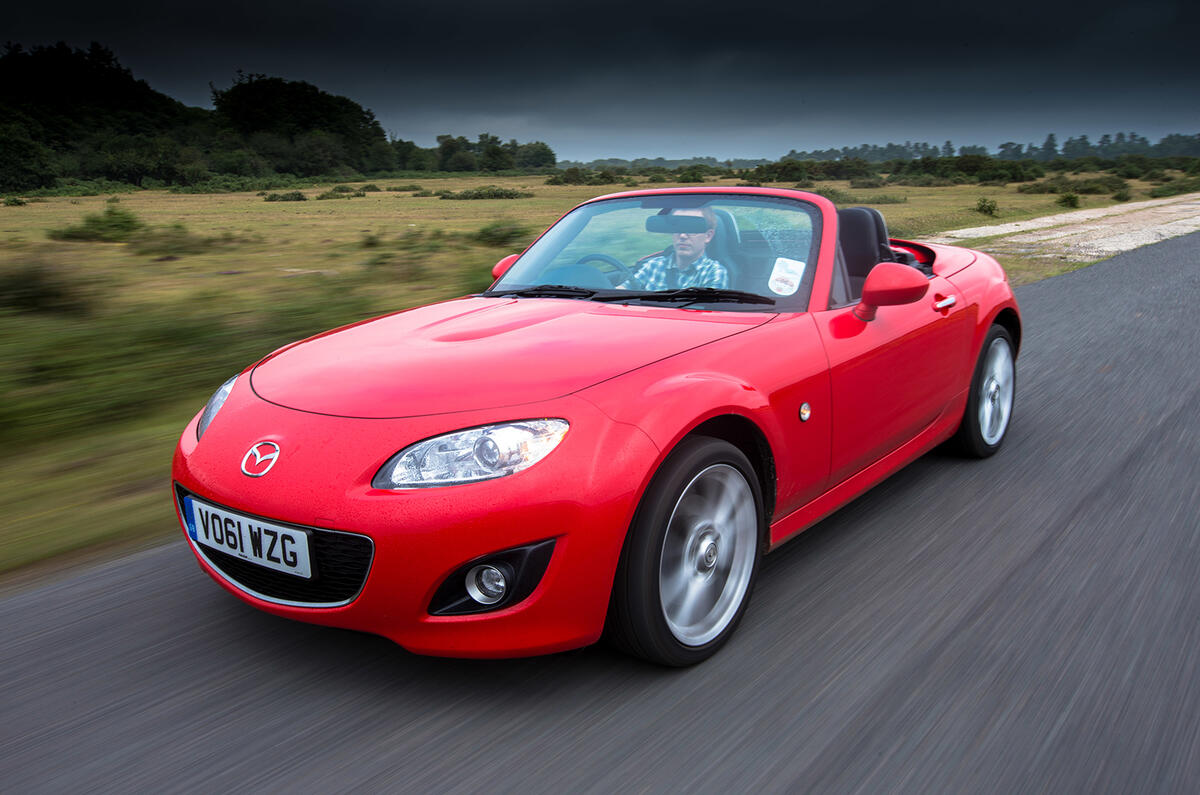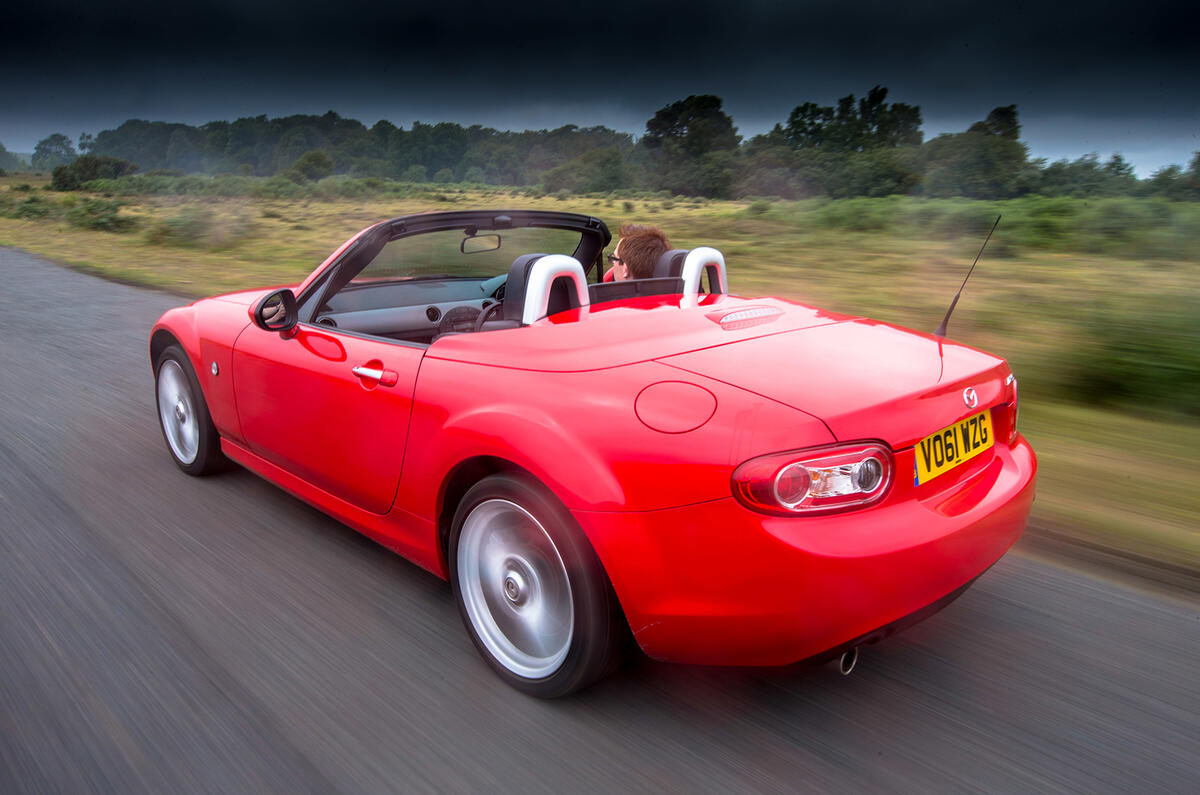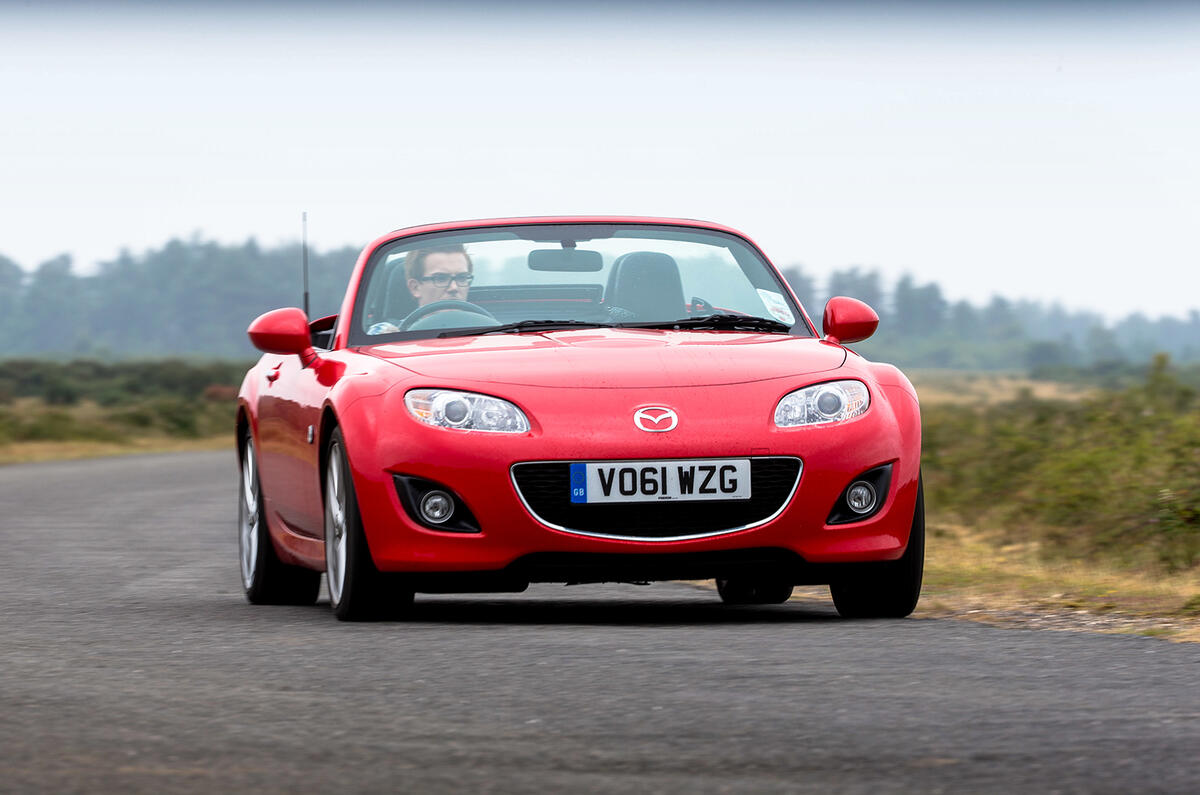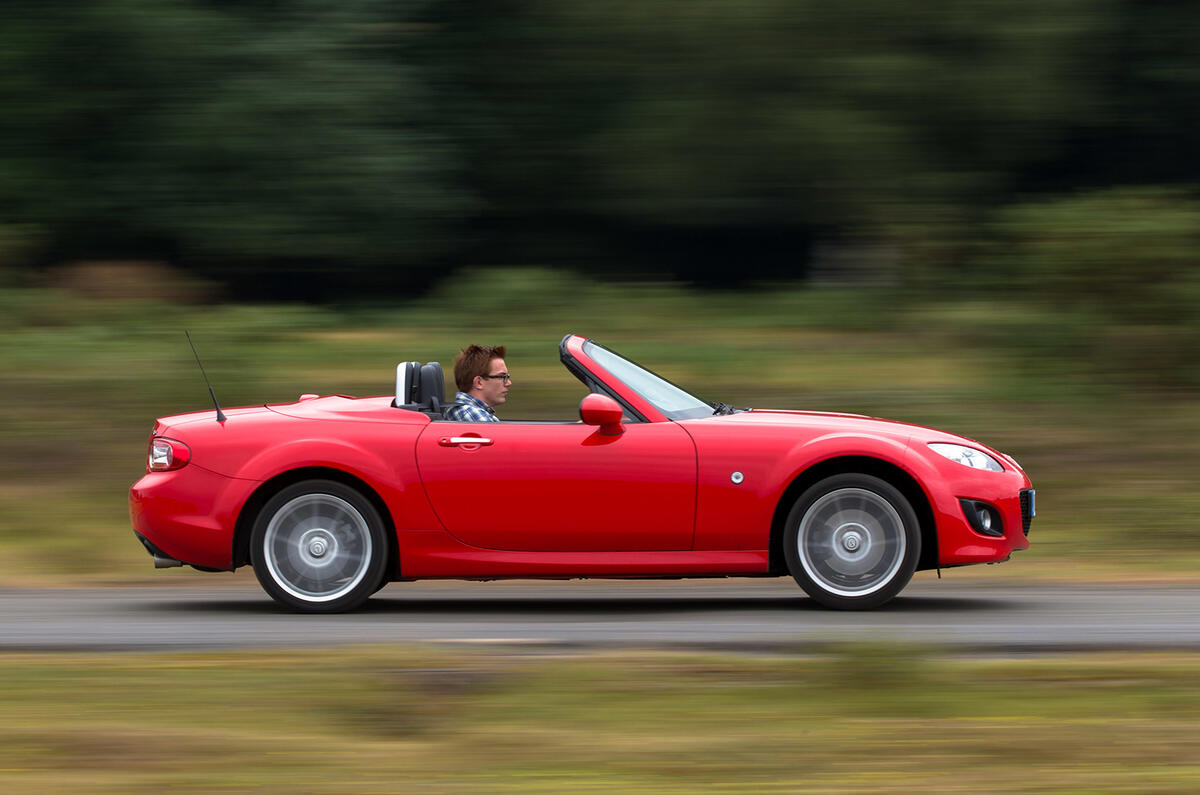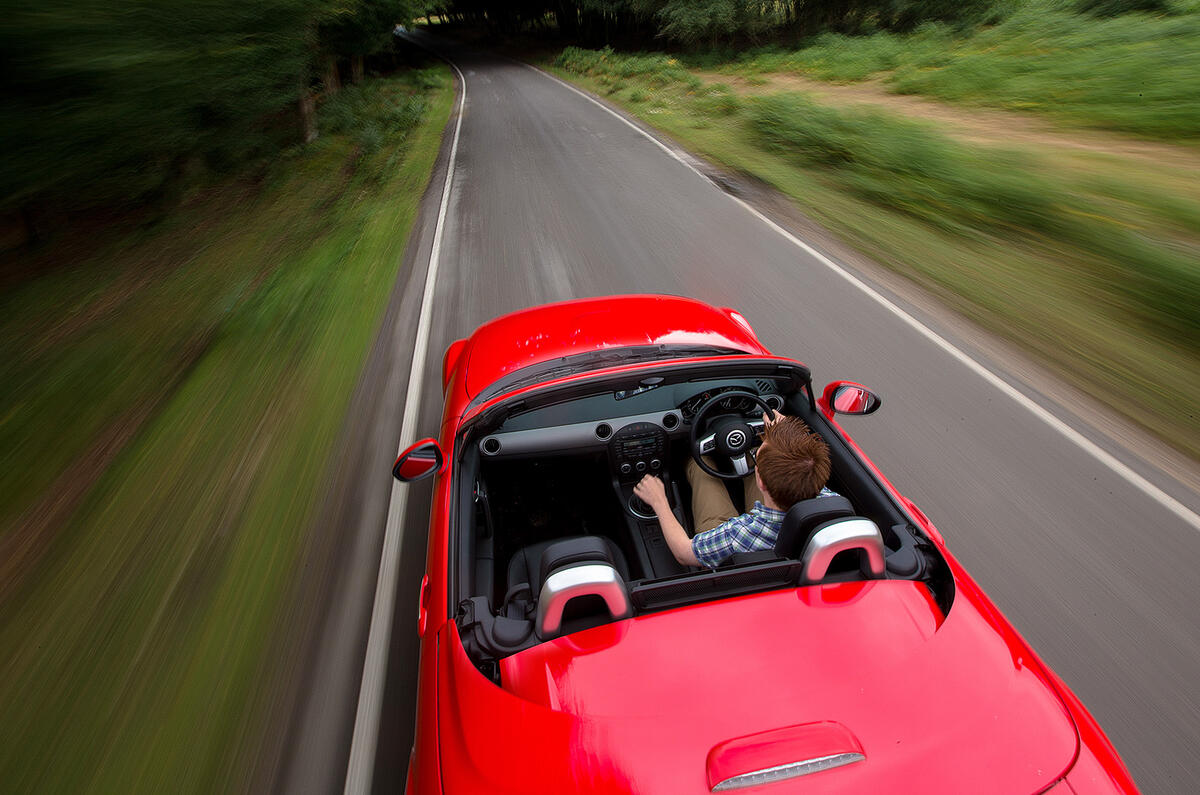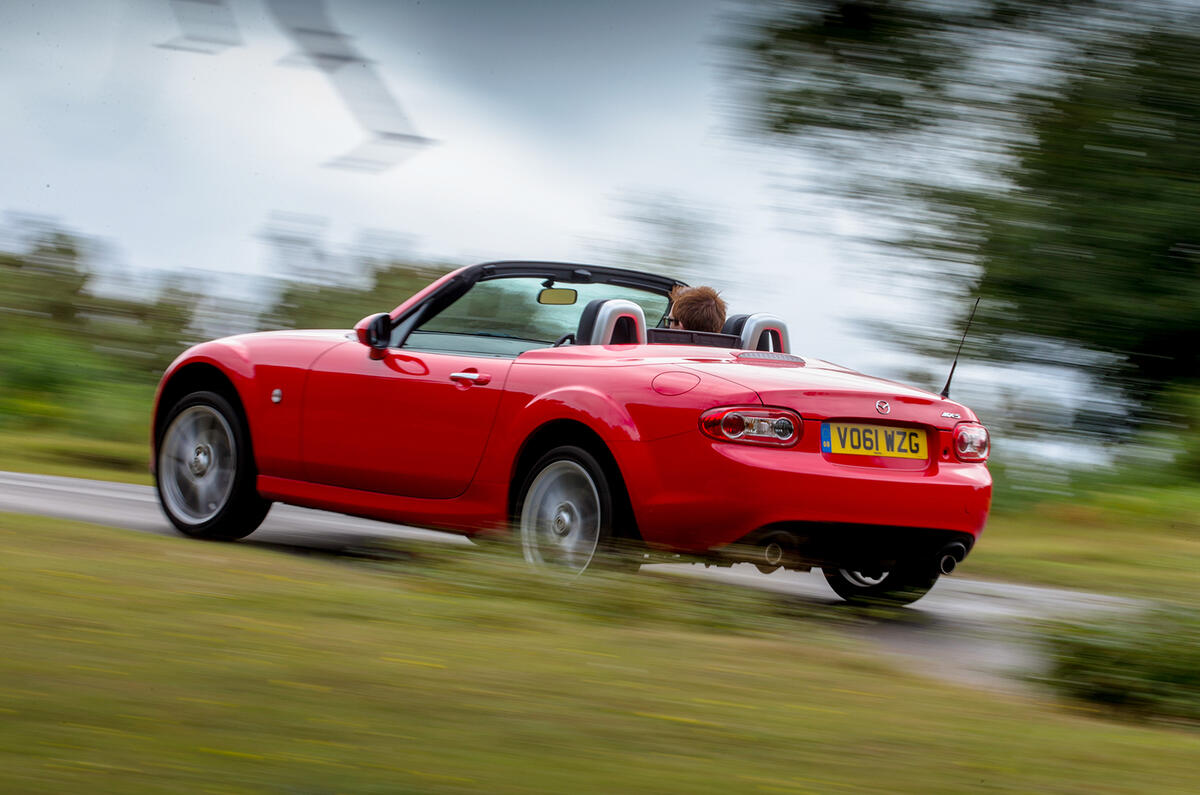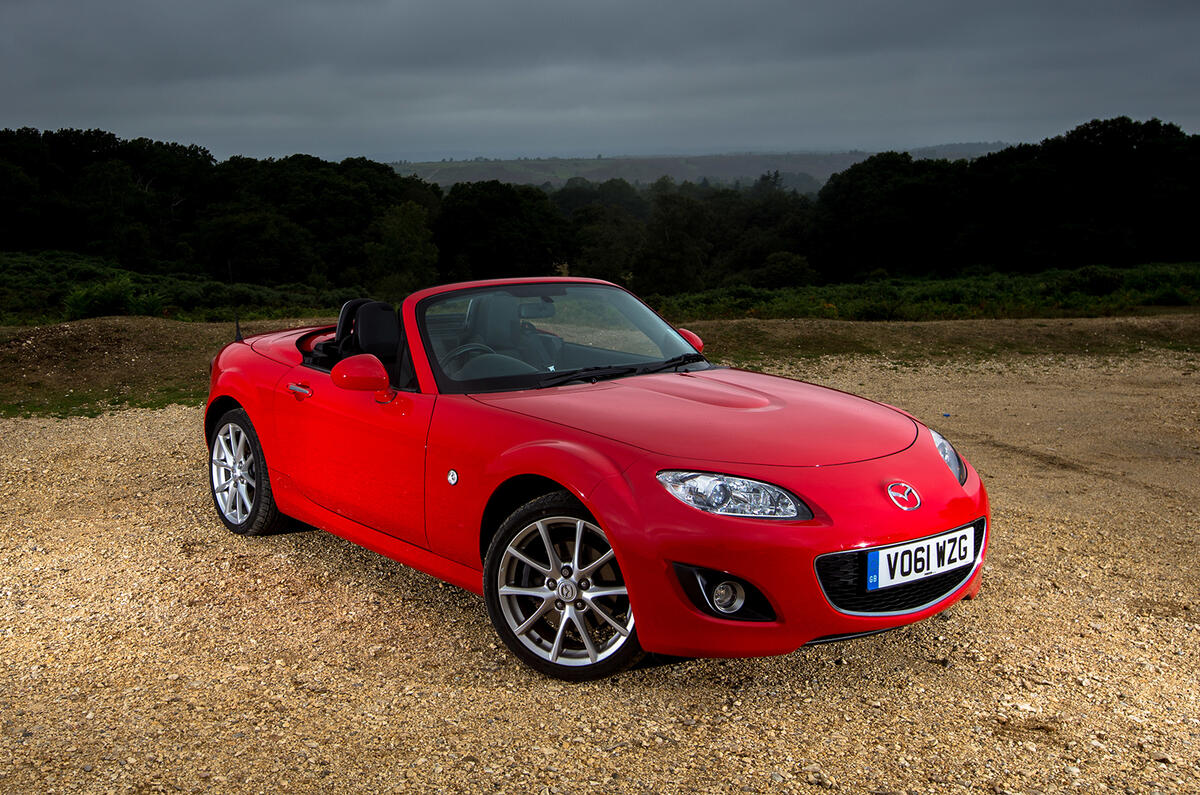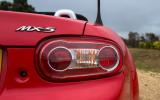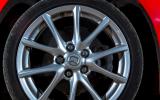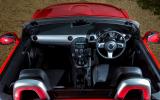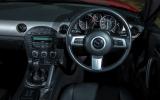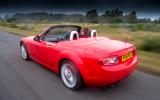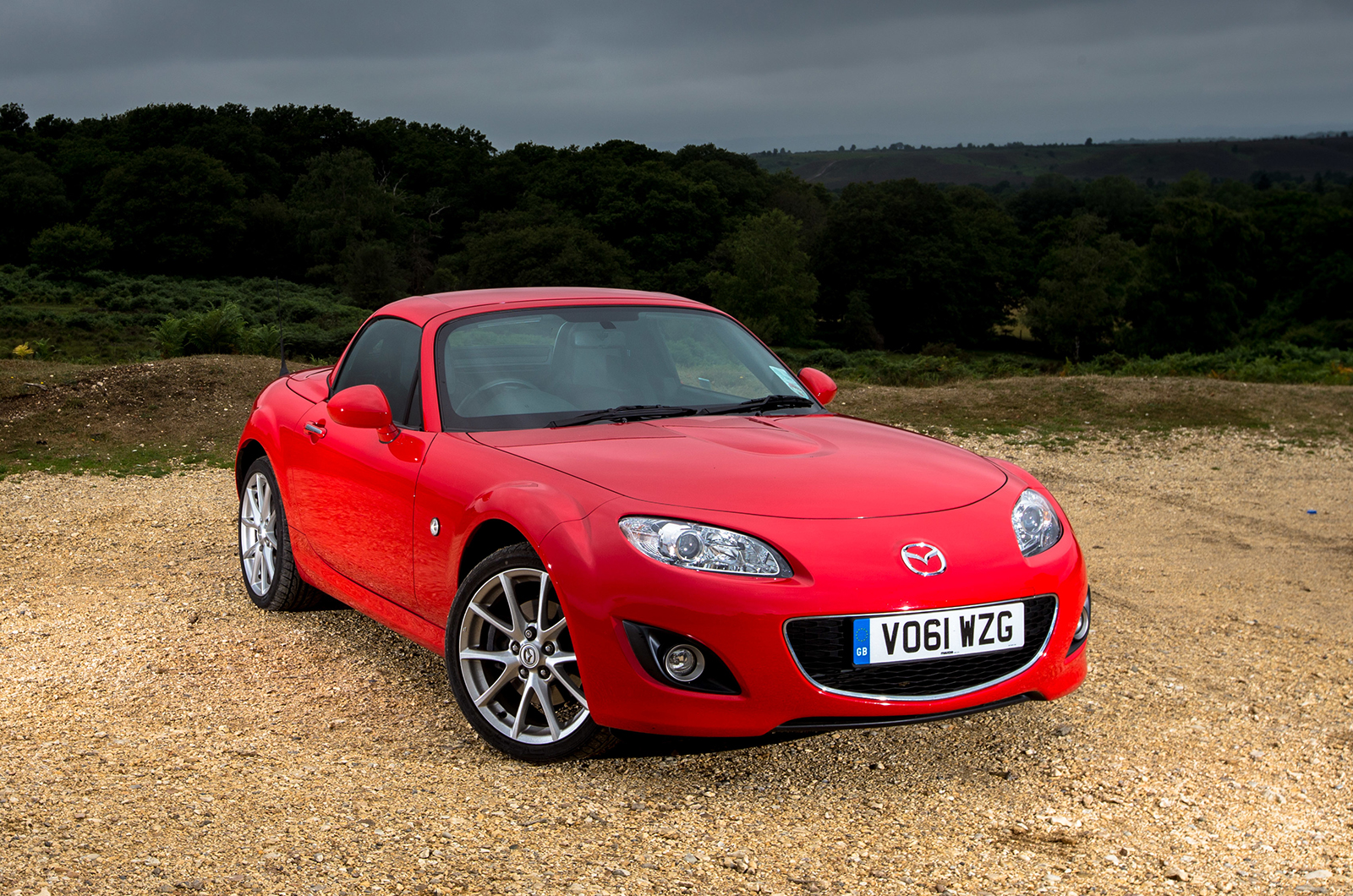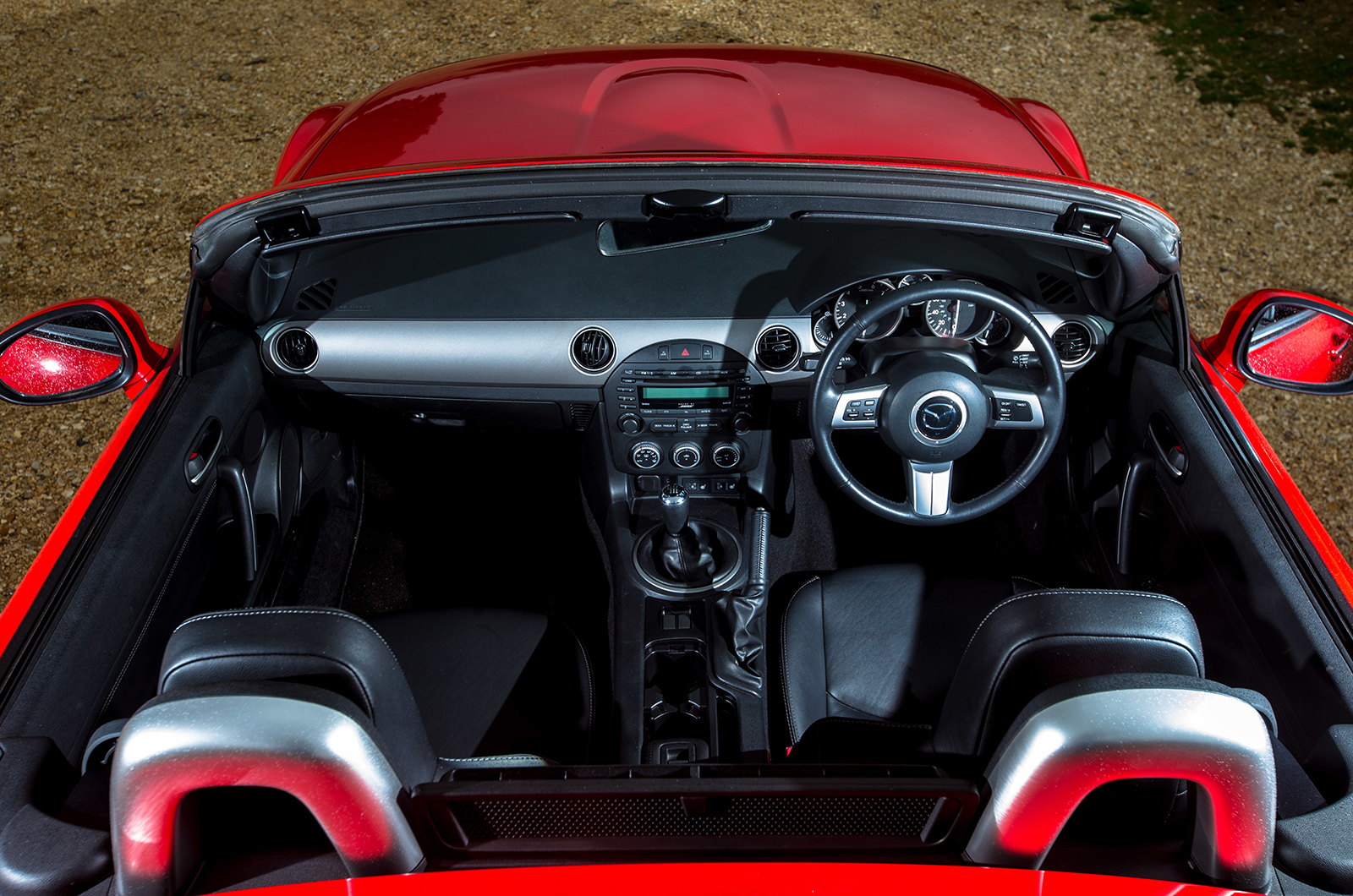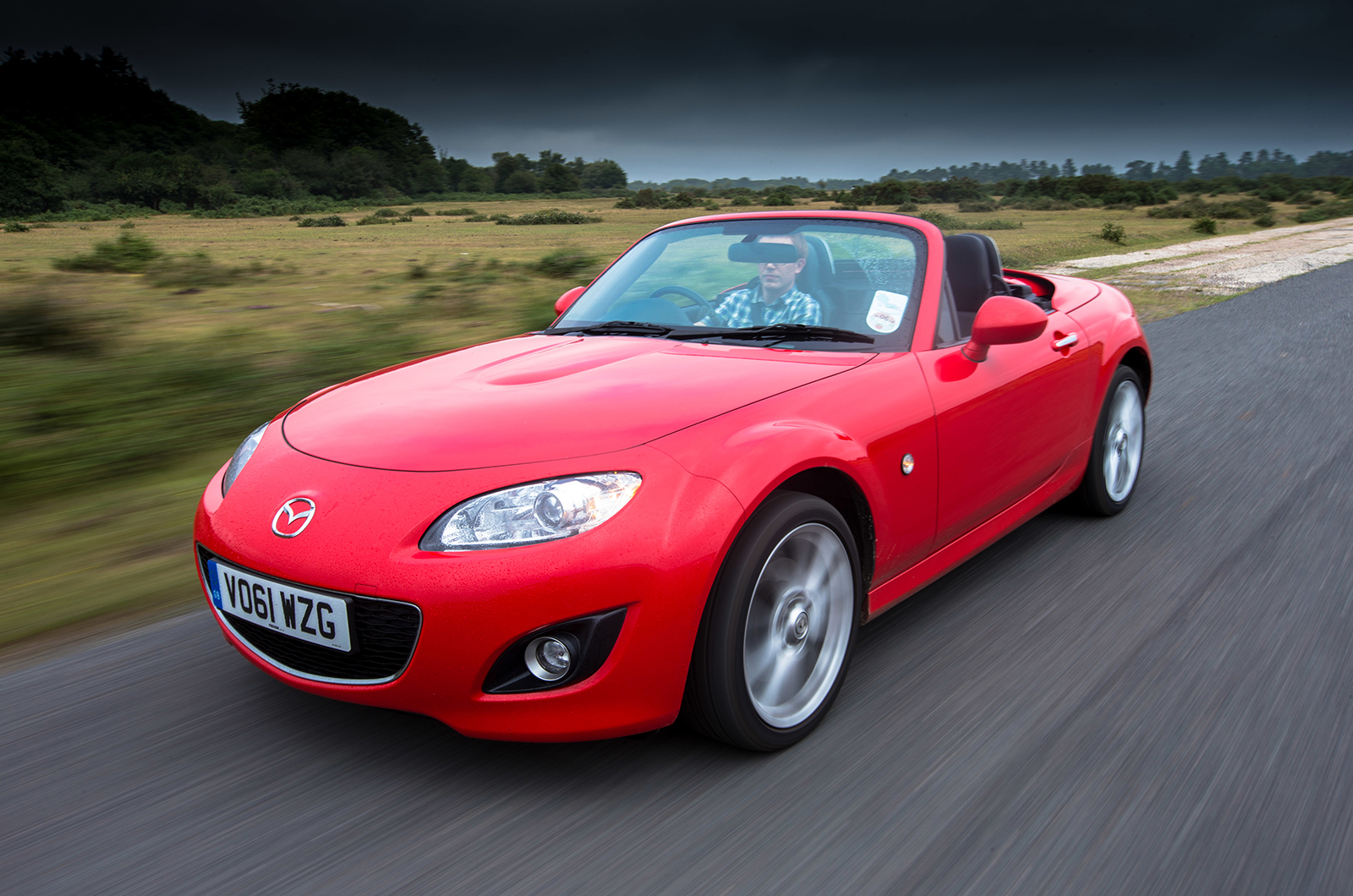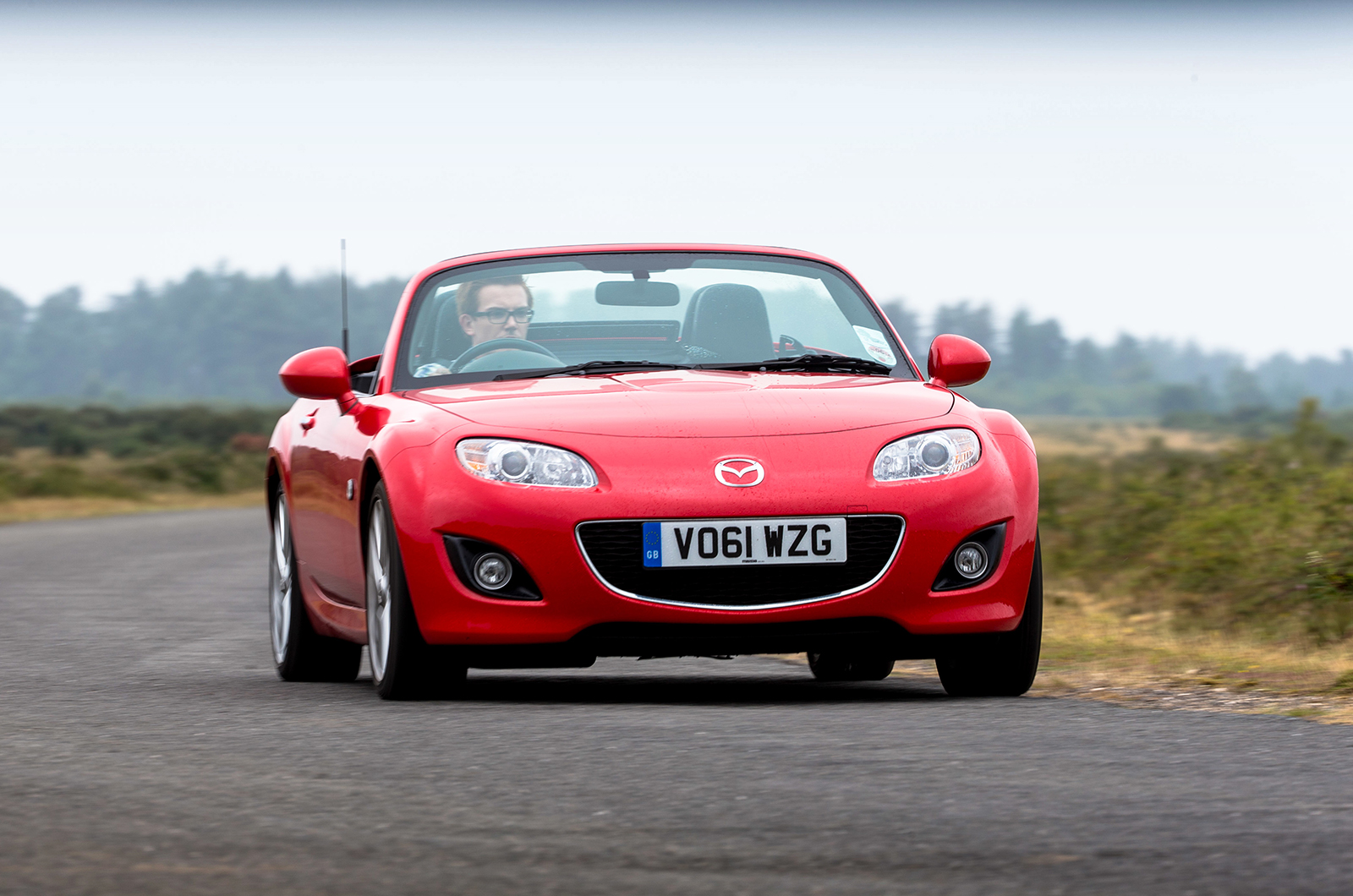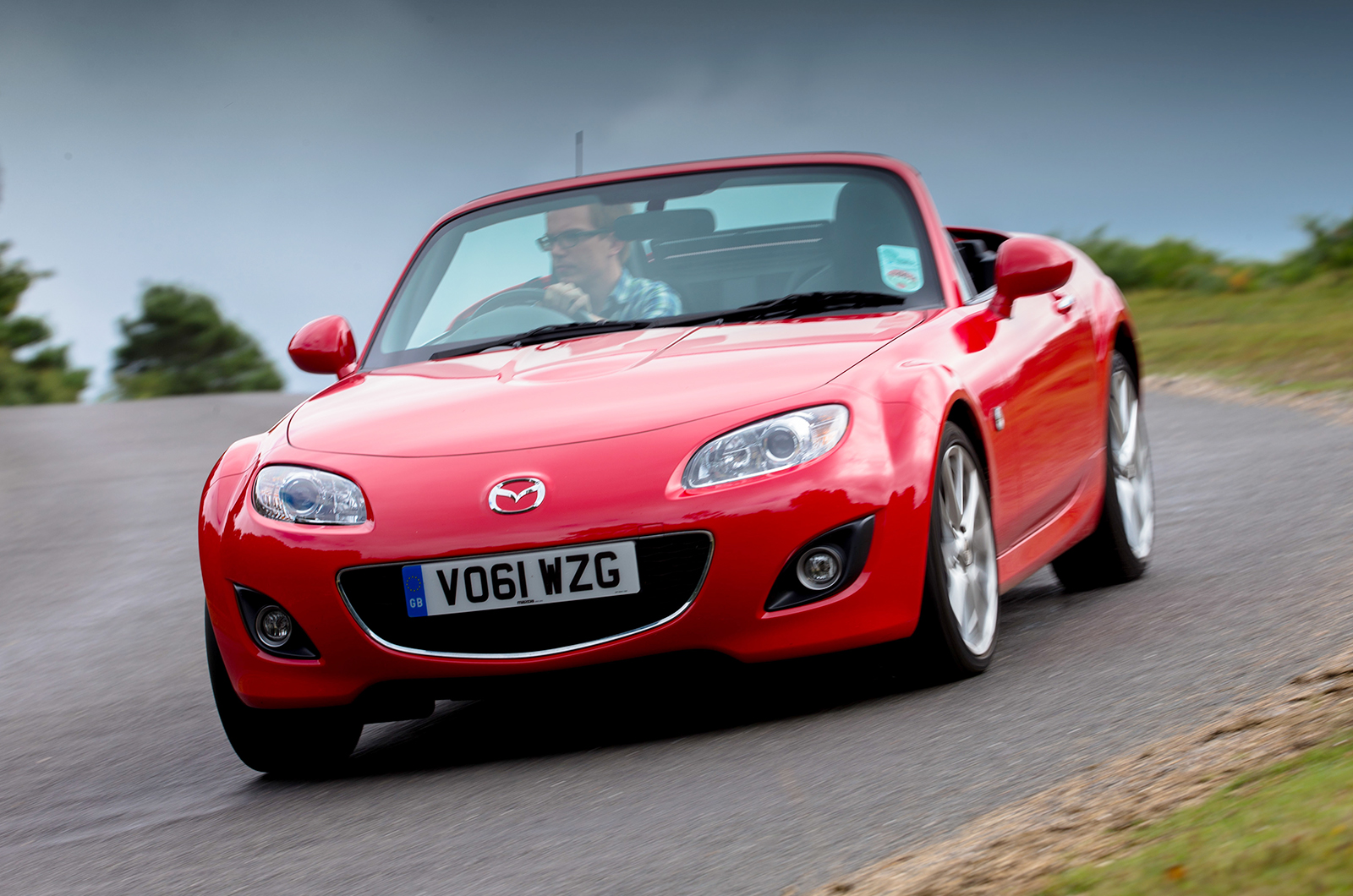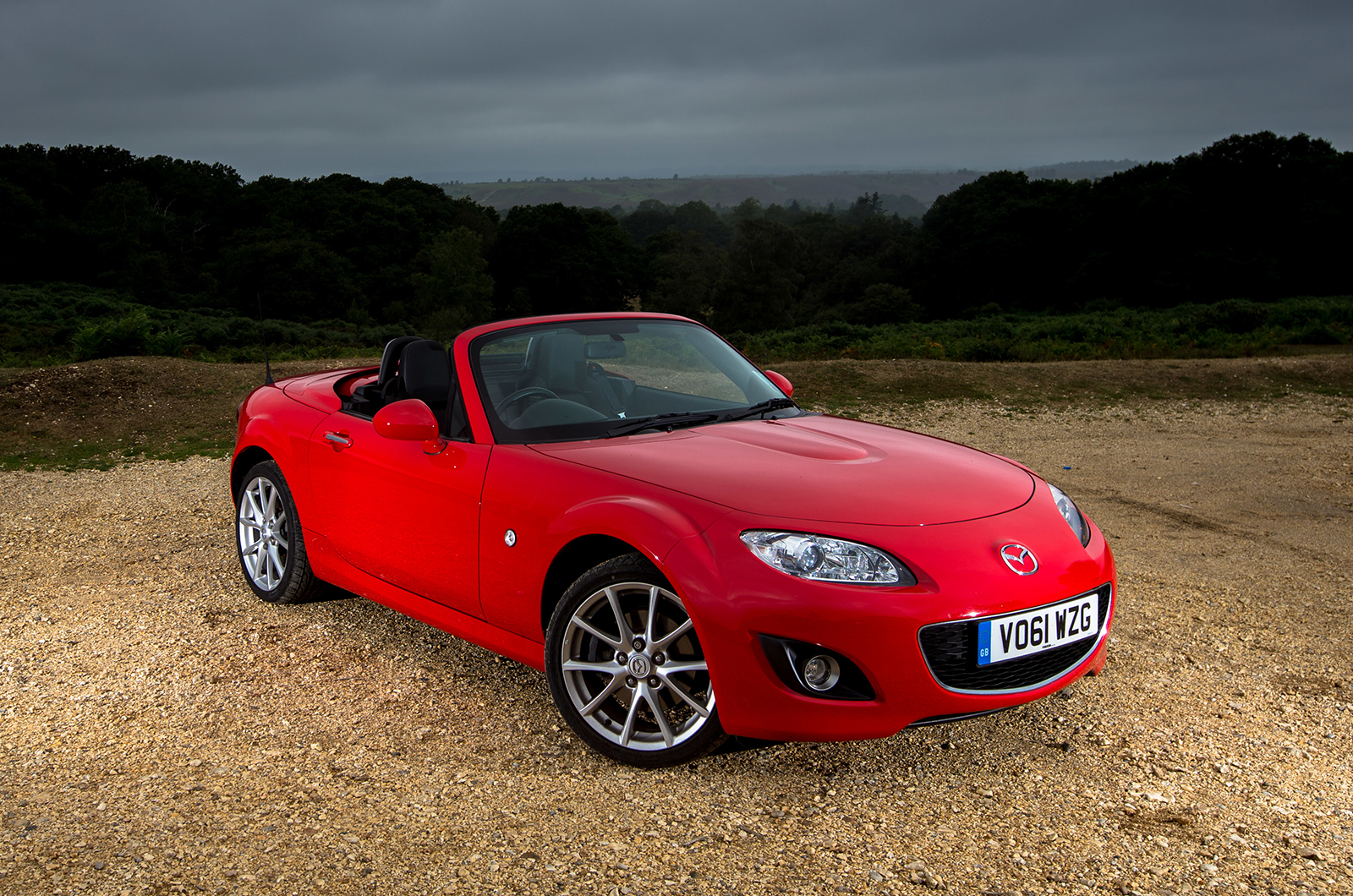Before the 1989 Chicago motor show, there was no mass-market sports car for motoring enthusiasts of average means.
There were hot hatches and mid-engined coupés, but the affordable roadster had vanished in the preceding decade. Then Mazda unveiled the MX-5 and, in a moment, the open sports car had a future.
The world’s most written about and, arguably, most desirable affordable car first arrived in Britain a year later, filling the void left by the old Lotus Elan. By 2000, the MX-5 had become the biggest-selling sports car of all time.
Such was the regard in which the second-generation model, produced between 1998 and 2005, was held, it was possible to overlook the fact that it shook and wobbled and wore a dated cabin. The charm of a basic, affordable roadster still prevailed.
By the time the Mk3 MX-5 was launched in 2005, buyers wanted more comfort and big-car refinement. To a large extent the MX-5 fulfilled that brief, even if weight had now grown to more than 1100kg (the original tipped the scales at less than 950kg; the Mk2 was a little over 1000kg).
Thankfully power increased too, and the range now encompasses 1.8 and 2.0-litre models, manual and automatic gearboxes and the choice of soft or folding hard-top models.
The 1.8-litre is only offered in the soft-top version, which incidentally weighs 80kg less than the hard-top Roadster Coupé, while the tin-top gets the option of the 2.0-litre motor and a wider range of trims.



